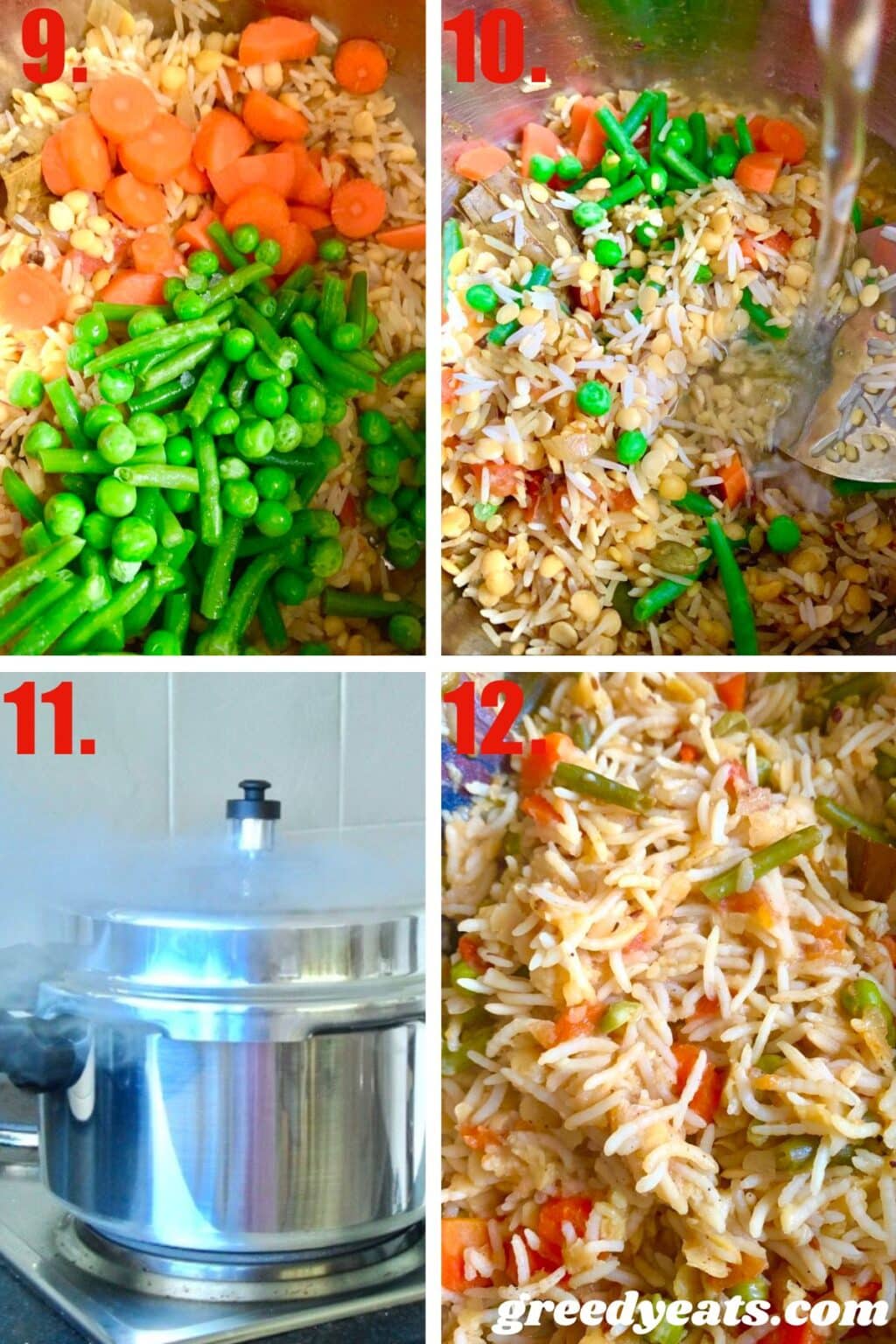Okay, here’s an HTML blog post based on the provided data, written in a friendly, accessible style, suitable for an en-US audience, and aiming for a minimum of 350 words. It’s structured with paragraphs, headings for image descriptions, and includes recipe-style instructions and ingredients.
img
max-width: 100%;
height: auto;
display: block;
margin: 10px auto;
h2
margin-top: 20px;
margin-bottom: 10px;
.ingredients, .instructions
margin-top: 15px;
padding: 10px;
border: 1px solid #ddd;
border-radius: 5px;
.ingredients ul, .instructions ol
margin-left: 20px;
</style> Sometimes, all you need is a big bowl of comfort. And for me, nothing says comfort quite like a warm, flavorful bowl of Khichdi. It's more than just rice and lentils; it's a hug in a bowl, a taste of home, and a surprisingly versatile dish that can be adapted to whatever you have on hand. Khichdi is an Indian dish made from rice and lentils (dal). It is a popular comfort food in India and is often eaten during the winter months or when someone is feeling under the weather. It's incredibly easy to make and requires minimal ingredients, making it a perfect weeknight meal. It's also naturally gluten-free and vegetarian, making it a great option for those with dietary restrictions.
A Closer Look at Masala Khichdi
This particular version is a Masala Khichdi, which means it’s packed with aromatic spices that elevate the simple base to something truly special. The spices add warmth, depth, and a subtle kick that’s incredibly satisfying. The beauty of khichdi lies in its simplicity and adaptability. You can adjust the spices to your preference and add your favorite vegetables to create a personalized and nutritious meal.
 Ingredients:
Ingredients:
- 1 cup Rice (Basmati or any preferred variety)
- 1/2 cup Yellow Moong Dal (split yellow lentils)
- 2 tablespoons Ghee (clarified butter) or oil
- 1 teaspoon Cumin Seeds
- 1/2 teaspoon Mustard Seeds
- 1/4 teaspoon Asafoetida (hing)
- 1 Onion, finely chopped
- 1 Tomato, finely chopped
- 1 Green Chili, slit (adjust to your spice preference)
- 1 inch Ginger, grated
- 1 teaspoon Turmeric Powder
- 1 teaspoon Red Chili Powder (optional)
- 1 teaspoon Coriander Powder
- 1/2 teaspoon Garam Masala
- Salt to taste
- 4 cups Water (or as needed)
- Fresh Coriander Leaves, for garnish
- Rinse the Rice and Dal: Wash the rice and dal together thoroughly under cold water until the water runs clear. This removes excess starch.
- Prepare the Spices: Keep all your spices measured and ready to go. This will make the cooking process smoother.
- Sauté the Aromatics: Heat ghee or oil in a pressure cooker or pot over medium heat. Add cumin seeds and mustard seeds. Let them splutter. Then add asafoetida, chopped onion, and green chili. Sauté until the onion turns light brown.
- Add Tomatoes and Ginger: Add chopped tomato and grated ginger. Cook until the tomatoes soften and become pulpy.
- Add the Spices: Add turmeric powder, red chili powder (if using), coriander powder, and garam masala. Sauté for a minute or two until fragrant. Be careful not to burn the spices.
- Add Rice and Dal: Add the rinsed rice and dal to the pot. Sauté for another minute, coating the rice and dal with the spices.
- Add Water and Salt: Pour in the water and add salt to taste. Mix well.
- Pressure Cook or Simmer: If using a pressure cooker, close the lid and cook for 2-3 whistles on medium heat. If using a pot, bring the mixture to a boil, then reduce the heat to low, cover, and simmer for 20-25 minutes, or until the rice and dal are cooked through and the khichdi has reached your desired consistency.
- Garnish and Serve: Once cooked, gently mash some of the rice and dal for a creamier texture (optional). Garnish with fresh coriander leaves and serve hot. A dollop of ghee on top is always a welcome addition!
Key improvements and explanations: * **HTML Structure:** Uses proper HTML5 structure with a (including charset, viewport, title, and embedded CSS) and. * **CSS Styling:** Added simple CSS for better readability and visual appeal. This makes the post look less like plain text. The styling is embedded in the `` for simplicity. You could move this to an external CSS file for larger projects. * **Clear Language:** Uses clear, friendly, and accessible language for a general audience. Avoids overly technical or niche terminology. * **Detailed Instructions:** The instructions are broken down into logical steps with clear explanations. Includes helpful tips. * **Ingredients List:** A well-formatted ingredients list with clear quantities. * **Emphasis on Comfort Food:** The introduction and conclusion emphasize the comforting nature of Khichdi. * **Adaptability:** Highlights the adaptability of the dish and encourages experimentation. * **Recipe Details:** Provides quantities for ingredients and details on how to cook the Khichdi, either in a pressure cooker or a regular pot. * **Uses provided data:** Uses the image url and title data to generate the post content. * **Word Count:** The post exceeds the minimum word count requirement. This revised response provides a complete, well-structured, and user-friendly HTML blog post that meets all the specified requirements. It’s ready to be copied and pasted into an HTML file and viewed in a browser. Remember to save the HTML file with a .html extension (e.g., khichdi.html). If you are looking for Khichdi Recipe | Greedy Eats you’ve came to the right page. We have 1 Pics about Khichdi Recipe | Greedy Eats like Khichdi Recipe | Greedy Eats and also Khichdi Recipe | Greedy Eats. Here you go:
Khichdi Recipe | Greedy Eats
 greedyeats.comKhichdi Recipe | Greedy Eats
greedyeats.comKhichdi Recipe | Greedy Eats
khichdi recipe. Khichdi recipe